#governor of the spanish netherlands
Photo

Alexander Farnese, Prince of Parma (1635-1689), governor of the Spanish Netherlands from 1678 to 1682. Unknown artist.
Alessandro Farnese (1635–1689) was an Italian military leader, who was Governor of the Habsburg Netherlands from 1678 until 1682.
This Alessandro was often called Alessandro di Odoardo (son of Odoardo).
#casa farnese#casato di farnese#alessandro farnesse#prince of parma#governor of the spanish netherlands#ducato di parma#ducato di parma e piacenza#italian aristocracy#kingdom of italy
5 notes
·
View notes
Text

Vincenzo Carducci (Italian, 1576-1638)
Expugnación de Rheinfelden, 1634
Museo Nacional del Prado, Madrid
In 1633, a Spanish army under Don Gómez Suárez de Figueroa, 3rd Duke of Feria, took the Swiss city of Rheinfelden, in a plan to link the Spanish territories of Milan and the Spanish Netherlands.
#Vincenzo Carducci#1634#1600s#art#fine art#european art#classical art#europe#european#fine arts#oil painting#europa#mediterranean#Don Gomez Suared de Figueroa#Duke of Feria#Rheinfelden#Spanish#Spanish netherlands#world history#spanish art#spanish#spain#hispanic#latin#war#Expugnación de Rheinfelden#Viceroy#he reminds me of Governor John Ratcliffe from Disney's Pocahontas#Governor John Ratcliffe#John Ratcliffe
14 notes
·
View notes
Text
Results of the First Set of Polls:
Ferdinand I has triumphed over Leopold II of Tuscany. He moves on now to face Mozart's emperor himself: Joseph II.
Carlos II - with all his particular quirks - has defeated John on Austria and will face Mary of Hungary (Queen of Hungary and Bohemia, Governor of the Netherlands) in the next round.
Napoleon II (honorary Habsburg) has made it to the main bracket and will face Philip II of Spanish armada fame.
#I will post the whole bracket once the next set of polls closes#but for now feel free to post any and all opinions on these upcoming rounds
21 notes
·
View notes
Text






Royal Deaths in History - 17th September
1322 - Robert III of Flanders.
1422 - Constantine II of Bulgaria.
1632 - Susenyos I, Emperor of Ethiopia.
1665 - Felipe IV, King of Spain & Portugal.
1679 - John Joseph of Austrian, Spanish general and illegitimate son of Felipe IV of Spain (Regent of Spain, Governor of South Netherlands).
1767 - Prince Edward of Wales, Duke of York and Albany, son of Frederick, Prince of Wales.
6 notes
·
View notes
Note
What does the black background white cross and star flag mean?

It's the resistance flag of the 300th anniversary. It was designed in 2014 as a homage to the defence of 1714.
1714 is the year where Castilla (Spain) invaded Catalonia in the War of the Spanish Succession. In the end, Catalonia's allies (the UK and the Netherlands) abandoned the war, so Catalans alone were left fighting. People knew what losing this war would mean, so they raised the black flag that means "no surrender" or "we'll fight until we die", as well as the flag of Santa Eulàlia which was the symbol of Barcelona. Catalonia has the civil population fighting, while the Bourbon army was made of Castilla (Spain) and France, the two biggest empires of the world. It's no surprise that Catalonia lost the war and, as a result, lost its independence: its traditional laws and institutions were banned and replaced by military governors chosen by the king, the Catalan language was banned to be used in official settings, Catalan people were forced to house the invading army in their homes and to pay for the war they had just lost, Catalan people were forbidden from having weapons (even bread knives had to be chained to the table), thousands of people who had fought were jailed and executed and thousands more had to leave on exile, among many many many other repressive laws.
In 2014, for the 300th anniversary of that, some people designed a flag based on the resistance symbols (the black flag + the cross of the Santa Eulàlia flag), paired with the star from the estelada (modern independence flag). This symbolises the "no surrender", that even after the defeat of 1714 Catalan people have always resisted, we have survived the ethnocide and Spain never managed to completely eliminate us. And we're still fighting.
41 notes
·
View notes
Text
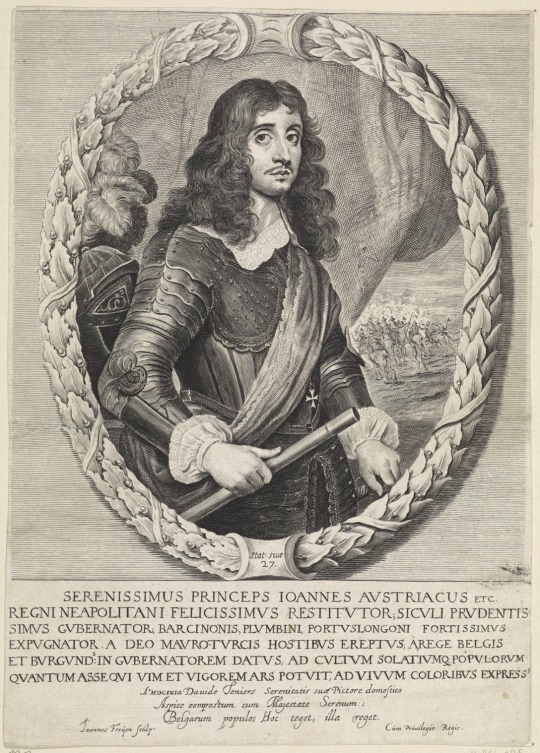
Don Juan of Austria, governor of the Spanish Netherlands, by Jan van Troyen (after David Teniers II), 1656.
30 notes
·
View notes
Photo
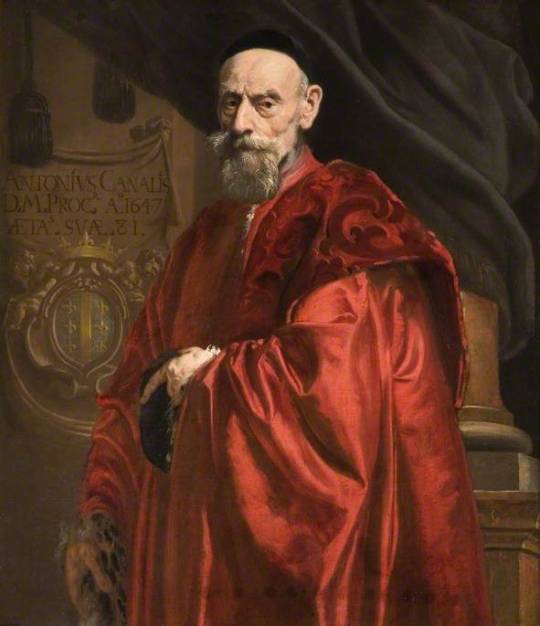
Daniel van den Dyck (Attr.) - Portrait of Antonio Canal - 1647
oil on canvas, height: 113 cm (44.4 in) Edit this at Wikidata; width: 98.4 cm (38.7 in)
Birmingham Museums Trust, UK
Daniel van den Dyck, known in Italy as Daniel Vandich (baptized on 3 December 1614, Antwerp – 1663, Mantua) was a Flemish painter, printmaker, architect and engineer. After training in Antwerp he left for Italy where he first worked in Venice and later became a court painter in Mantua. He was a versatile artist who created mythological and religious scenes, as well as portraits and flower-pieces.
Very little is known about the early life of Daniel van den Dyck. He was born in Antwerp as the son of Jan van den Dyck and Cornelia Kerstboom. He was baptized in Antwerp Cathedral on 3 December 1614. He was registered as a pupil of Peter Verhaeght in the Antwerp Guild of Saint Luke in the guild year 1631-1632. He was registered as a master of the Antwerp Guild of Saint Luke in the guild year 1633-1634. It is assumed that shortly after becoming a master he left Antwerp as he was not involved in any of the large commissions on which Antwerp painters worked in the middle of the 1630s such as the decorations for the Joyous Entry into Antwerp of the new governor of the Habsburg Netherlands Cardinal-Infante Ferdinand and the decorations for the hunting pavilion Torre de la Parada of the Spanish king Philip IV near Madrid.
The artist passed first through Bergamo where he created a few signed and dated portraits. He was in Venice likely from 1634 onwards. Here he married Lucrezia Renieri, the eldest daughter of Nicolas Régnier, a Flemish painter active in Venice who was herself a painter. The couple had three sons. His father-in-law had been active in Venice since 1626 not only as a painter but also as an art dealer and art collector. Clorinda, the younger sister of van den Dyck's wife was married to the prominent Italian painter Pietro della Vecchia (1605-1678). These family ties meant that van den Dyck could rely on a network of Flemish and Italian artists in Venice. This allowed him to gain many commissions for religious paintings in churches as well as for portraits. He painted wall decorations in the Palazzo Pesaro in Preganziol together with his brother-in-law della Vecchia and their respective spouses.
Evidence of the esteem in which he was held in his time is the fact that one of his works - a portrait - was included in the early biographer Carlo Ridolfi's book on Venetian painters of 1648 entitled Le maraviglie dell'Arte ovvero, Le vite degli Illustri Pittori Veneti and dello Stato. He was also praised by Marco Boschini in his La carta del navegar pitoresco of 1660, a panygeric poem about Venetian painting. Boschini dedicated two pages to van den Dyck and represented the artist in a print as Jupiter embellishing Virtue with a royal mantle.
Giovan Francesco Loredano, one of the founders of the Accademia degli Incogniti, a learned society of freethinking intellectuals established in 1630 in Venice, often ordered the illustrations for his multiple writings from van den Dyck, Pietro della Vecchia and Francesco Ruschi.[3] One of these prints was a portrait of Loredano which he made for Loredano's Opere (Collected works).
From late 1657 van den Dyck was living with his family in Mantua. On 2 April of the next year he was named by duke Carlo II Gonzaga as his official court painter, architect, surveyor of his building program and engineer for stage designs for the theatre. He also was made the superintendent of the duke's gallery and tasked with reconstituting the ducal art collection which had become dispersed during the previous two dukes' reign. Possibly his appointment was made on the recommendation of his father-in-law who had provided services to the duke on various occasions. As the prefetto delle fabbriche (surveyor of works) van den Dyck had to move between the various construction sites such as Maderno, Marmirolo, Mantua and Venice, to check the transportation of the many marble statues, inspect the progress and quality of the various construction works undertaken at the ducal palace as well as the suburban residences, ordered supplies and tools, organized the daily assignments of the workers and made sure the duke was informed timely through frequent correspondence. The constant and exhausting travel in this role did not allow van den Dyck to work as a painter, the premier reason for his appointment to the court. This may explain why van den Dyck operated a large workshop with assistants. These assistants would produce his works which he would then 'touch up'.
The date of his death is not known with certainty. It is placed shortly after he drew up his will on 27 June 1662. On 4 April 1663 the duke of Mantua appointed another Flemish painter called Frans Geffels as his new court painter. Van den Dyck's son may have become a painter as his grandfather Nicolas Régnier bequeathed onto him all his prints, drawings and reliefs to study.
22 notes
·
View notes
Video
youtube
DeSantis said no one questioned slavery before Americans. See Van Jones ...
CHRONOLOGY-Who banned slavery when?
By Reuters Staff
3 MIN READ
(Reuters) - Britain marks 200 years on March 25 since it enacted a law banning the trans-Atlantic slave trade, although full abolition of slavery did not follow for another generation.
Following are some key dates in the trans-atlantic trade in slaves from Africa and its abolition.
1444 - First public sale of African slaves in Lagos, Portugal
1482 - Portuguese start building first permanent slave trading post at Elmina, Gold Coast, now Ghana
1510 - First slaves arrive in the Spanish colonies of South America, having travelled via Spain
1518 - First direct shipment of slaves from Africa to the Americas
1777 - State of Vermont, an independent Republic after the American Revolution, becomes first sovereign state to abolish slavery
1780s - Trans-Atlantic slave trade reaches peak
1787 - The Society for the Abolition of the Slave Trade founded in Britain by Granville Sharp and Thomas Clarkson
1792 - Denmark bans import of slaves to its West Indies colonies, although the law only took effect from 1803.
1807 - Britain passes Abolition of the Slave Trade Act, outlawing British Atlantic slave trade.
- United States passes legislation banning the slave trade, effective from start of 1808.
1811 - Spain abolishes slavery, including in its colonies, though Cuba rejects ban and continues to deal in slaves.
1813 - Sweden bans slave trading
1814 - Netherlands bans slave trading
1817 - France bans slave trading, but ban not effective until 1826
1833 - Britain passes Abolition of Slavery Act, ordering gradual abolition of slavery in all British colonies. Plantation owners in the West Indies receive 20 million pounds in compensation
- Great Britain and Spain sign a treaty prohibiting the slave trade
1819 - Portugal abolishes slave trade north of the equator
- Britain places a naval squadron off the West African coast to enforce the ban on slave trading
1823 - Britain’s Anti-Slavery Society formed. Members include William Wilberforce
1846 - Danish governor proclaims emancipation of slaves in Danish West Indies, abolishing slavery
1848 - France abolishes slavery
1851 - Brazil abolishes slave trading
1858 - Portugal abolishes slavery in its colonies, although all slaves are subject to a 20-year apprenticeship
1861 - Netherlands abolishes slavery in Dutch Caribbean colonies
1862 - U.S. President Abraham Lincoln proclaims emancipation of slaves with effect from January 1, 1863; 13th Amendment of U.S. Constitution follows in 1865 banning slavery
1886 - Slavery is abolished in Cuba
1888 - Brazil abolishes slavery
1926 - League of Nations adopts Slavery Convention abolishing slavery
1948 - United Nations General Assembly adopts Universal Declaration of Human Rights, including article stating “No one shall be held in slavery or servitude; slavery and the slave trade shall be prohibited in all their forms.”
4 notes
·
View notes
Text
Events 5.14
1027 – Robert II of France names his son Henry I as junior King of the Franks.
1097 – The Siege of Nicaea begins during the First Crusade.
1264 – Battle of Lewes: Henry III of England is captured and forced to sign the Mise of Lewes, making Simon de Montfort the effective ruler of England.
1509 – Battle of Agnadello: In northern Italy, French forces defeat the Republic of Venice.
1607 – English colonists establish "James Fort," which would become Jamestown, Virginia, the earliest permanent English settlement in the Americas.
1608 – The Protestant Union, a coalition of Protestant German states, is founded to defend the rights, land and safety of each member against the Catholic Church and Catholic German states.
1610 – Henry IV of France is assassinated by Catholic zealot François Ravaillac, and Louis XIII ascends the throne.
1643 – Four-year-old Louis XIV becomes King of France upon the death of his father, Louis XIII.
1747 – War of the Austrian Succession: A British fleet under Admiral George Anson defeats the French at the First Battle of Cape Finisterre.
1796 – Edward Jenner administers the first smallpox inoculation.
1800 – The 6th United States Congress recesses, and the process of moving the Federal government of the United States from Philadelphia to Washington, D.C., begins the following day.
1804 – William Clark and 42 men depart from Camp Dubois to join Meriwether Lewis at St Charles, Missouri, marking the beginning of the Lewis and Clark Expedition's historic journey up the Missouri River.
1811 – Paraguay: Pedro Juan Caballero, Fulgencio Yegros and José Gaspar Rodríguez de Francia start actions to depose the Spanish governor.
1836 – The Treaties of Velasco are signed in Velasco, Texas.
1857 – Mindon Min was crowned as King of Burma in Mandalay, Burma.
1863 – American Civil War: The Battle of Jackson takes place.
1868 – Boshin War: The Battle of Utsunomiya Castle ends as former Tokugawa shogunate forces withdraw northward.
1870 – The first game of rugby in New Zealand is played in Nelson between Nelson College and the Nelson Rugby Football Club.
1878 – The last witchcraft trial held in the United States begins in Salem, Massachusetts, after Lucretia Brown, an adherent of Christian Science, accused Daniel Spofford of attempting to harm her through his mental powers.
1879 – The first group of 463 Indian indentured laborers arrives in Fiji aboard the Leonidas.
1900 – Opening of World Amateur championship at the Paris Exposition Universelle, also known as Olympic Games.
1913 – Governor of New York William Sulzer approves the charter for the Rockefeller Foundation, which begins operations with a $100 million donation from John D. Rockefeller.
1915 – The May 14 Revolt takes place in Lisbon, Portugal.
1918 – Cape Town Mayor, Sir Harry Hands, inaugurates the Two-minute silence.
1931 – Five unarmed civilians are killed in the Ådalen shootings, as the Swedish military is called in to deal with protesting workers.
1935 – The Constitution of the Philippines is ratified by a popular vote.
1939 – Lina Medina becomes the youngest confirmed mother in medical history at the age of five.
1940 – World War II: Rotterdam, Netherlands is bombed by the Luftwaffe of Nazi Germany despite a ceasefire, killing about 900 people and destroying the historic city center.
1943 – World War II: A Japanese submarine sinks AHS Centaur off the coast of Queensland.
1948 – Israel is declared to be an independent state and a provisional government is established. Immediately after the declaration, Israel is attacked by the neighboring Arab states, triggering the 1948 Arab–Israeli War.
1951 – Trains run on the Talyllyn Railway in Wales for the first time since preservation, making it the first railway in the world to be operated by volunteers.
1953 – Approximately 7,100 brewery workers in Milwaukee perform a walkout, marking the start of the 1953 Milwaukee brewery strike.
1955 – Cold War: Eight Communist bloc countries, including the Soviet Union, sign a mutual defense treaty called the Warsaw Pact.
1961 – Civil rights movement: A white mob twice attacks a Freedom Riders bus near Anniston, Alabama, before fire-bombing the bus and attacking the civil rights protesters who flee the burning vehicle.
1970 – Andreas Baader is freed from custody by Ulrike Meinhof, Gudrun Ensslin and others, a pivotal moment in the formation of the Red Army Faction.
1973 – Skylab, the United States' first space station, is launched.
1977 – A Dan-Air Boeing 707 leased to IAS Cargo Airlines crashes on approach to Lusaka International Airport in Lusaka, Zambia, killing six people.
1980 – Salvadoran Civil War: the Sumpul River massacre occurs in Chalatenango, El Salvador.
1987 – Fijian Prime Minister Timoci Bavadra is ousted from power in a coup d'état led by Lieutenant colonel Sitiveni Rabuka.
1988 – Carrollton bus collision: A drunk driver traveling the wrong way on Interstate 71 near Carrollton, Kentucky hits a converted school bus carrying a church youth group. Twenty-seven die in the crash and ensuing fire.
2004 – The Constitutional Court of South Korea overturns the impeachment of President Roh Moo-hyun.
2004 – Rico Linhas Aéreas Flight 4815 crashes into the Amazon rainforest during approach to Eduardo Gomes International Airport in Manaus, Brazil, killing 33 people.
2008 – Battle of Piccadilly Gardens in Manchester city centre between Zenit supporters and Rangers supporters and the Greater Manchester Police, 39 policemen injured, one police-dog injured and 39 arrested.
2010 – Space Shuttle Atlantis launches on the STS-132 mission to deliver the first shuttle-launched Russian ISS component — Rassvet. This was originally slated to be the final launch of Atlantis, before Congress approved STS-135.
2012 – Agni Air Flight CHT crashes in Nepal after a failed go-around, killing 15 people.
2022 – Ten people are killed in a mass shooting in Buffalo, New York.
1 note
·
View note
Text
The Spanish Armada

The Spanish Armada was an enormous 130-ship naval fleet dispatched by Spain in 1588 as part of a planned invasion of England. Following years of hostilities between Spain and England, King Philip II of Spain assembled the flotilla in the hope of removing Protestant Queen Elizabeth I from the throne and restoring the Roman Catholic faith in England. Spain’s “Invincible Armada” set sail that May, but it was outfoxed by the English, then battered by storms while limping back to Spain with at least a third of its ships sunk or damaged. The defeat of the Spanish Armada led to a surge of national pride in England and was one of the most significant chapters of the Anglo-Spanish War.
King Philip II’s decision to attempt an overthrow of Queen Elizabeth I was several years in the making. Despite their family connections—Philip had once been married to Elizabeth’s half-sister, Mary—the two royals had severe political and religious differences and had engaged in a “cold war” for much of the 1560s and 1570s. Philip was particularly incensed by the spread of Protestantism in England, and he had long toyed with the idea of conquering the British Isle to bring it back into the Catholic fold. Tensions between Spain and England flared in the 1580s, after Elizabeth began allowing privateers such as Sir Francis Drake to conduct pirate raids on Spanish fleets carrying treasure from their rich New World colonies. By 1585, when England signed a treaty of support with Dutch rebels in the Spanish-controlled Netherlands, a state of undeclared war existed between the two powers. That same year, Philip began formulating an “Enterprise of England” to remove Elizabeth from the throne.
The Spanish Armada was a naval force of about 130 ships, plus some 8,000 seamen and an estimated 18,000 soldiers manning thousands of guns. Roughly 40 of the ships were warships. The Spanish plan called for this “Great and Most Fortunate Navy” to sail from Lisbon, Portugal, to Flanders, where it would rendezvous with 30,000 crack troops led by the Duke of Parma, the governor of the Spanish Netherlands. The fleet would then guard the army as it was ferried across the English Channel to the Kent coast to begin an overland offensive against London. It was impossible for Spain to hide the preparations for a fleet as large as the Armada, and by 1587, Elizabeth’s spies and military advisors knew an invasion was in the works. That April, the Queen authorized Francis Drake to make a preemptive strike against the Spanish. After sailing from Plymouth with a small fleet, Drake launched a surprise raid on the Spanish port of Cadiz and destroyed several dozen of the Armada’s ships and over 10,000 tons of supplies. The “singeing of the king of Spain’s beard,” as Drake’s attack was known in England, was later credited with delaying the launch of the Armada by several months. The English used the time bought by the raid on Cadiz to shore up their defenses and prepare for invasion. Elizabeth’s forces built trenches and earthworks on the most likely invasion beaches, strung a giant metal chain across the Thames estuary and raised an army of militiamen. They also readied an early warning system consisting of dozens of coastal beacons that would light fires to signal the approach of the Spanish fleet.
Led by Drake and Lord Charles Howard, the Royal Navy assembled a fleet of some 40 warships and several dozen armed merchant vessels. Unlike the Spanish Armada, which planned to rely primarily on boarding and close-quarters fighting to win battles at sea, the English flotilla was heavily armed with long-range naval guns. In May 1588, after several years of preparation, the Spanish Armada set sail from Lisbon under the command of the Duke of Medina-Sidonia. When the 130-ship fleet was sighted off the English coast later that July, Howard and Drake raced to confront it with a force of 100 English vessels. The English fleet and the Spanish Armada met for the first time on July 31, 1588, off the coast of Plymouth. Relying on the skill of their gunners, Howard and Drake kept their distance and tried to bombard the Spanish flotilla with their heavy naval cannons. While they succeeded in damaging some of the Spanish ships, they were unable to penetrate the Armada’s half-moon defensive formation.
Over the next several days, the English continued to harass the Spanish Armada as it charged toward the English Channel. The two sides squared off in a pair of naval duels near the coasts of Portland Bill and the Isle of Wight, but both battles ended in stalemates. By August 6, the Armada had successfully dropped anchor at Calais Roads on the coast of France, where Medina-Sidonia hoped to rendezvous with the Duke of Parma’s invasion army. Desperate to prevent the Spanish from uniting their forces, Howard and Drake devised a last-ditch plan to scatter the Armada. At midnight on August 8, the English set eight empty vessels ablaze and allowed the wind and tide to carry them toward the Spanish fleet hunkered at Calais Roads. The sudden arrival of the fireships caused a wave of panic to descend over the Armada. Several vessels cut their anchors to avoid catching fire, and the entire fleet was forced to flee to the open sea. With the Armada out of formation, the English initiated a naval offensive at dawn on August 8. In what became known as the Battle of Graveline's, the Royal Navy inched perilously close to the Spanish fleet and unleashed repeated salvos of cannon fire. Several of the Armada’s ships were damaged and at least four were destroyed during the nine-hour engagement, but despite having the upper hand, Howard and Drake were forced to prematurely call off the attack due to dwindling supplies of shot and powder.
With the Spanish Armada threatening invasion at any moment, English troops gathered near the coast at Tilbury in Essex to ward off a land attack. Queen Elizabeth herself was in attendance and - dressed in military regalia and a white velvet gown - she gave a rousing speech to her troops, one that is often cited as among the most inspiring speeches ever written and delivered by a sovereign leader: "I know I have the body of a weak, feeble woman; but I have the heart and stomach of a king, and of a king of England too, and think foul scorn that Parma or Spain, or any prince of Europe, should dare to invade the borders of my realm; to which rather than any dishonor shall grow by me, I myself will take up arms, I myself will be your general, judge and rewarder of every one of your virtues in the field." Shortly after the Battle of Graveline's, a strong wind carried the Armada into the North Sea, dashing the Spaniards’ hopes of linking up with the Duke of Parma’s army. With supplies running low and disease beginning to spread through his fleet, the Duke of Medina-Sidonia resolved to abandon the invasion mission and return to Spain by rounding Scotland and Ireland. The Spanish Armada had lost over 2,000 men during its naval engagements with the English, but its journey home proved to be far more deadly. The once-mighty flotilla was ravaged by sea storms as it rounded Scotland and the western coast of Ireland. Several ships sank in the squalls, while others ran aground or broke apart after being thrown against the shore.
By the time the “Great and Most Fortunate Navy” finally reached Spain in the autumn of 1588, it had lost as many as 60 of its 130 ships and suffered some 15,000 deaths. The vast majority of the Spanish Armada’s losses were caused by disease and foul weather, but its defeat was nevertheless a triumphant military victory for England. By fending off the Spanish fleet, the island nation saved itself from invasion and won recognition as one of Europe’s most fearsome sea powers. The clash also established the superiority of heavy cannons in naval combat, signaling the dawn of a new era in warfare at sea. While the Spanish Armada is now remembered as one of history’s great military blunders, it didn’t mark the end of the conflict between England and Spain. In 1589, Queen Elizabeth launched a failed “English Armada” against Spain.
King Philip II, meanwhile, later rebuilt his fleet and dispatched two more Spanish Armadas in the 1590s, both of which were scattered by storms. It wasn’t until 1604—over 16 years after the original Spanish Armada set sail—that a peace treaty was finally signed ending the Anglo-Spanish War as a stalemate.
3 notes
·
View notes
Text

Introducting San Juan
In 1508 the Spanish expedition leader Juan Ponce de Leon established Caparra, a small settlement close to a protected bay on the north coast of the island of Puerto Rico. In 1521 the town was vacated and resited to the present location of Old San Juan. In the 16th century, San Juan was the origin for Spanish exploratory trips to little known parts of the Caribbean.
Nowadays the old section of San Juan has an authentic Old World feel with over 300 restored Spanish 17th century town houses. The area also contains many shops, restaurants, bars, and casinos for cruise passengers to sample.

Touring San Juan
Characterful Old San Juan sits on a bluff overlooking the Atlantic Ocean northwards, and the port southwards. This walled and fortified area, now a major historical landmark, was established in 1510. Old San Juan is compactly sized, easy to get around on foot. If your energy runs out take the free bus that runs around the main attractions. Take time to stroll along the narrow cobblestone streets and admire the brightly colored houses, craft shops, and go to the interesting museums.
El Morro Fort
El Morro, a huge fort dating from 1539, defends San Juan from sea pirates. Its full name is Castillo San Felipe del Morro, after the patron saint of King Philip of Spain. You'll find six sets of gun platforms and huge walls that loom over San Juan Bay and the Atlantic Ocean.
La Fortaleza
Don't miss La Fortaleza, San Juan's oldest fort, founded in 1540. Later it was to become the official residence of the governor. Informative tours take you through the sumptuous building, with gilded banqueting hall, tall galleries, and rooms furnished in period fashion.
Cathedral de San Juan
This impressive cathedral dates back to 1592, on the site of the previous cathedral which was destroyed by a storm. Situated on Calle Cristo, this structure with a unique gothic pavonine facade contains the crypt of Ponce de Leon, a Spanish seaman, and the first ever governor of Puerto Rico.
Shopping
Most of the shopping in Old San Juan is to be found in the many shops along Cristo, Fortaleza and San Francisco streets. As an alternative go to the two markets where you'll find a big choice of jewelry, fashions, art and souvenirs. One is located at the Plaza de la Darsena, in front of pier 1, the other on the Paseo de la Princesa, just along from pier 1.
Bacardi Rum Distillery
Rum drinkers may prefer its nickname the Cathedral of Rum. There's a free guided tour and enjoyable trolley ride. After the boring talk about the distillery's early years enjoy a drink or two.
El Yunque
The only tropical rain forest in the US National Forest system. Very beautiful with a totally sylvan atmosphere. Situated about 45 minutes from San Juan.
Cabezas de San Juan Nature Reserve
A fascinating ecological reserve with 7 different tropical habitats. Be warned though, visitor numbers are limited, so a reservation is essential.
Cruise Ideas
Enthusiastic cruise vacationers pick San Juan as an alternative to a Florida port. Thanks to its central Caribbean location, the island provides quick access to wonderful Southern Caribbean ports, like the Netherland Antilles and the Windward Isles. A short flight is a better alternative to the long cruise to these areas from mainland US. The range of cruises on offer from San Juan is wide, including the Leeward Isles (USVI, St Maarten, St Kitts, Guadeloupe), the Windward Isles (Dominica, St Lucia, Barbados, St Vincent, Grenada,Tobago), and the Leeward Antilles off the north coast of Venezuela (the ABC islands ie Aruba, Bonaire, and Curacao). See San Juan cruises for detailed cruise departure information. Several major cruiselines offer cruises from San Juan, such as Carnival, Royal Caribbean, PO Cruises, Princess Cruises, Silversea and Celebrity Cruises.

Cruise Ship Terminals
There are three major pier areas in San Juan port. Old San Juan piers 1 through 6, the Pan American pier, and Navy Frontier pier. Most times cruise ships visiting San Juan berth at the Old San Juan Piers, so passengers can walk into Old San Juan. Cruise ships leaving from San Juan will berth at Old San Juan pier 4, or the Pan American Pier, 15 minutes by cab from Old San Juan.
Getting to the Port
From the Airport
San Juan airport is located about nine miles from the Pan American pier and 12 miles from the Old San Juan piers. It usually takes about three quarters of an hour in a cab for the journey. The cost is around twenty dollars. Additional charges apply for luggage, some drivers charging by item.
Resources
San Juan Port https://www.prpa.pr.gov/
0 notes
Text

Vincenzo Carducci (Italian, 1576-1638)
Socorro de la plaza de Constanza, 1634
Museo Nacional del Prado, Madrid
This painting celebrates the liberation of the Swiss square of Constance from the siege to which it was being subjected by the Swedish troops of General Horn, who sought to cut off the communication of the imperial troops with the Spanish troops of Valtellina and Milanese.
On the canvas, the Spanish nobleman, diplomat and army commander Don Gómez Suárez de Figueroa, 3rd Duke of Feria appears in the foreground, on horseback, on an elevation of land, practically occupying the left half of the canvas. A lance page runs at his side, and behind him appears a group of armored knights among whom Lieutenant General Geraldo Gambacurta, who commanded the cavalry, may be represented.
#Vincenzo Carducci#Socorro de la plaza de constanza#he reminds me of Governor John Ratcliffe from Disney's Pocahontas#1634#1600s#art#fine art#european art#classical art#europe#european#fine arts#oil painting#europa#mediterranean#Don Gomez Suared de Figueroa#Duke of Feria#Rheinfelden#Spanish#Spanish netherlands#world history#spanish art#spanish#spain#hispanic#latin#war#Viceroy#Governor John Ratcliffe#John Ratcliffe
10 notes
·
View notes
Text
Virtual Sketchbook 3
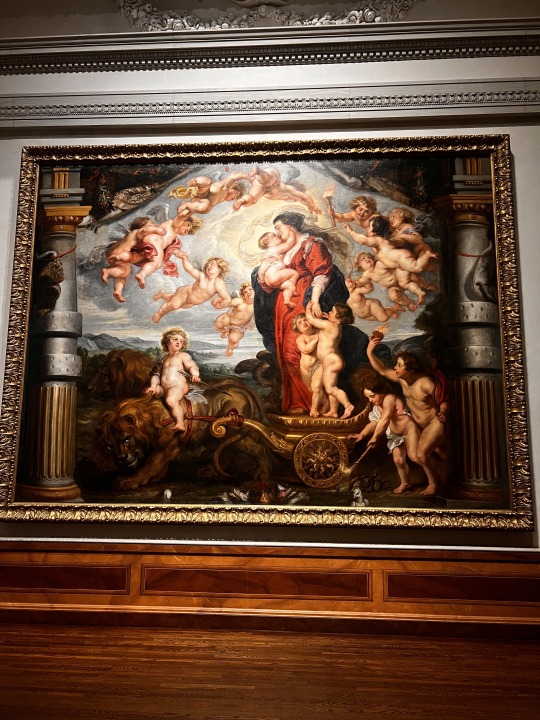
The Triumph of Divine Love
c. 1625
Peter Paul Rubens
Oil on canvas
Before beginning my journey to the Ringling Museum of Art, I had no idea what to expect. I was first fascinated by the Italian and Renaissance art. There are seriously so many talented artists that speak through their work and we get to view it all! Although I enjoyed all the work this museum had to offer, there was one painting that stood out to me the most.
The artwork I chose to study is The Triumph of Divine Love by Peter Paul Rubens. The painting was created with oil on canvas around the year 1625. Ruben’s painting is 17 feet tall and 12.6 feet wide. This picture does not do Ruben’s work as much justice as it should and is exceedingly large. There is an obvious focal point at the center of the painting showing a woman holding a baby. She is wearing a long red dress with a black shawl and is surrounded by sixteen angels. The woman is standing upon a cart being hauled by two lions. There are 4 angels standing at the bottom left corner, 1 angel on a lion in the bottom right, and 11 others creating a circle above the mother and infant from above. The charcoal-colored columns and sinister lighting along the sides and corners create a significant contrast against the pearl-colored sky highlighting the mother, baby, and angels. Two mistrustful lions are protruding through the dark at the bottom of the painting creating an eerie tone with their narrowed eyes.
This painting portrays the genre of religious art and heavily emphasis a maternal figure; the Virgin Mary. The artist used a proportional gradience to highlight the woman in the center; a classical vignette. The position of each angel encircling the woman and infant creates tremendous balance and unity. Although the expressions of each angel are incompatible with one another, it creates variety.
This piece of artwork made me feel nostalgia and a sense of empowerment. The way the artist positioned the mother and child created a sentimental feeling; one I can relate to. I was enticed at the detail of the emotions on everyone's face, including the lions. As I stepped further away taking note of the foreground, those feelings of sentiment faded. I noticed an evil expression on the lion and an angel holding a red heart well-lit on fire! Soon I began to question the true meaning of the painting and my perspective shifted.
In Spain during the early 1600s, Ruben was a talented artist who was known for his religious paintings during the Baroque era. The daughter of the governor in the Spanish Netherlands commissioned Peter Paul Rubens to develop eleven painted tapestries to create: The Triumph of Eucharist. Ruben’s work was intended to motivate a specific element of Catholicism known as Eucharist. This involves eating bread and drinking wine representing the body and blood of Christ. Ruben may have been of the Catholic faith to paint such beautiful religious work. The artist intended to represent the worship of the Virgin Mary holding baby Jesus. Ruben did a wonderful job creating such a bright angelic focal point while also revealing the other side of the spectrum: evil and darkness on the outside.
After further research and pondering, I began to understand the true message behind this painting. Of course, at the time, the Triumph of Divine Love was meant to play a significant role in the Counter Reformation. Throughout this assignment, I have learned how important it is to view art from a distance to truly comprehend the big picture. This painting today still highlights how we can overcome the forces of evil with unconditional or religious love. When I saw this painting, I immediately felt somehow connected to it. I grew up devoutly Christian and still practice my faith today. The first thing I noticed was the Virgin Mary holding Jesus and my heart was filled with gratitude. The style of this work is rich in detail and emotion. I wanted to further study the history and intentions behind this painting. Overall, I had a wonderful experience at the Ringling Museum and found great satisfaction discovering The Triumph of Divine Love.




0 notes
Text
A footprint of Savoy in Flanders

The Court of Savoy (Hof van Savoye in Dutch) is a Renaissance palace in the Belgian city of Mechelen, built in the 15th century as a residence for the governors of the Netherlands, a Burgundian possession, which was eventually disassociated when the King of France definitively absorbed its territories into his kingdom.
In 1452, the Duke of Burgundy, Philippe III, commissioned the construction of the Hof van Savoye as part of his plan to strengthen the presence of the House of Burgundy in Flanders. This Flemish-style building was completed in 1473, although it was remodelled and enlarged throughout the 16th century.
The palace witnessed significant changes in European power and politics, as after the extinction of the House of Burgundy it served as a residence for the governors of the House of Habsburg, who inherited control of the Netherlands following the marriage of Mary of Burgundy to Emperor Maximilian I of Austria, grandfather of another Habsburg emperor, Karl V, also king of the Spanish Monarchy as Carlos I.
The palace had such a prominent occupant that the building is also known by her name. A daughter of Maximilian I, Archduchess Margaret, was ruler of the Netherlands in the early 16th century. But for those who wonder where the memory of the fief then linked to northern Italy comes from, suffice it to say that the archduchess's last husband was Duke Philibert II of Savoy.
During the French occupation in the 18th century, the building was used as a prison and in the early 20th century, the Hof van Savoye was restored and adapted to house the Royal Academy of Fine Arts of Mechelen. This change of function marked a new era for the building, which became a cultural and educational centre.
However, the history of the Hof van Savoye was not without its challenges. During the Second World War, the building was badly damaged by bombing. However, an extensive restoration was carried out in the 1950s, returning the building to much of its former glory.
1 note
·
View note
Text
ABEL TASMAN
ABEL TASMAN
1603-1659
DUTCH EXPLORER AND NAVIGATOR
Abel Tasman was born in the Netherlands. Tasman worked for the Dutch East India Company.
Tasman is best known for his voyages from 1642-1644. He is the first European explorer recorded to reach Van Diemen’s Land (Tasmania, Australia) and New Zealand and also viewed Tonga and Fiji. Tasman reached Tasmania in 1642 and named it ‘Van Diemen’s Land’ after the Governor-General of the Dutch East Indies. Tasmania was later renamed in his honour. His ship was blown out to sea by a storm and the wind steered him east where he sighted New Zealand which he named ‘Staten Landt’. The boats stopped there to gather water but one of his boats was attacked by the Maori people and four his men were killed. He was unable to claim New Zealand for the Dutch.
On his 1644 voyage he followed the south coast of New Guinea east and mapped the north coast of Australia and called Australia ‘New Holland’ and observed the land and its people. He was disappointed that he couldn’t explore the lands he had discovered and that a different explorer should be chosen for a future expedition. Captain James Cook wouldn’t discover Australia until 1770.
In 1648 he was in charge of an expedition to Manila to loot Spanish ships coming from America, but was unsuccessful.
In 1649, Tasman was charged and found guilty of hanging one of his men without a trial and was suspended from being Office of Commander, was fined and made to pay compensation to the family of the sailor that was killed. He was reinstated to his rank two years later.
He spent the rest of his life in Batavia (Jakarta, Indonesia) and was well off financially and was one of the best-off landowners in town. He died in Batavia in 1659 and was survived by his second wife and daughter (from his first wife). His property was divided to his wife and daughter and he left money to the poor people who lived in his village.
#abeltasman

0 notes
Text
Five steps of Wikipedia for Monday, 24th July 2023
Welcome, Willkommen, Benvenuta, 안녕하세요 🤗
Five steps of Wikipedia from "Lohfelderfähre" to "Antonio Farnese, Duke of Parma". 🪜👣
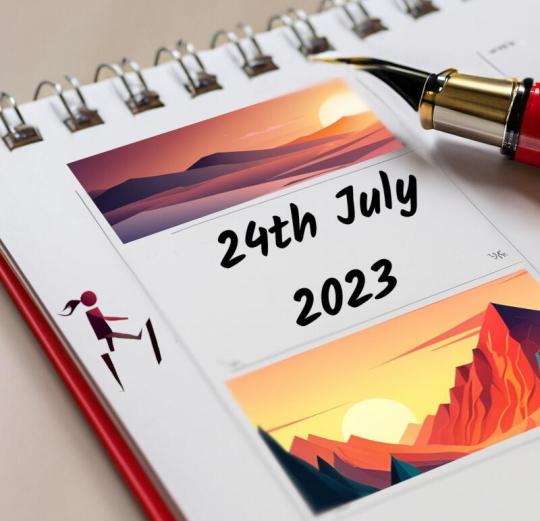
Start page 👣🏁: Lohfelderfähre
"Lohfelderfähre is a district of Bad Honnef, Germany. It evolved around the Eastern bank pier of the car ferry across the Rhine between Bad Honnef and Rolandseck...."
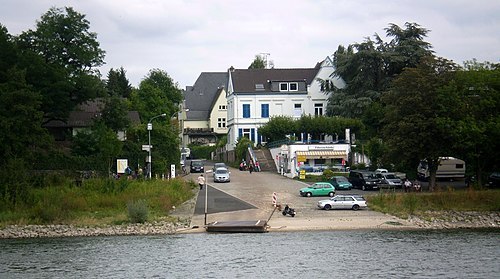
Image licensed under CC BY-SA 4.0? by Leit
Step 1️⃣ 👣: Rolandseck
"Rolandseck is a borough in the town of Remagen in Rhineland-Palatinate, Germany. The place consists almost entirely of villas and is a favorite summer resort. Crowning the vine-clad hills behind it lie the ruins of the castle, a picturesque ivy-covered arch, whence a fine view is obtained of the..."

Image by Plumpaquatsch
Step 2️⃣ 👣: Archbishop of Cologne
"The Archbishop of Cologne is an archbishop governing the Archdiocese of Cologne of the Catholic Church in western North Rhine-Westphalia and is also a historical state in the Rhine holding the birthplace of Beethoven and northern Rhineland-Palatinate in Germany and was ex officio one of the..."
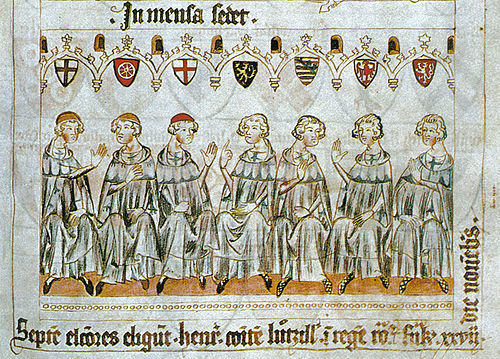
Image by Unknown authorUnknown author
Step 3️⃣ 👣: Agnes von Mansfeld-Eisleben
"Agnes von Mansfeld-Eisleben (1551–1637) was Countess of Mansfeld and the daughter of Johann (Hans) Georg I, of Mansfeld Eisleben. She converted Gebhard, Seneschal of Waldburg, the Prince-Elector of Electorate of Cologne and archbishop of the Diocese of Cologne to the Protestant faith, leading to the..."
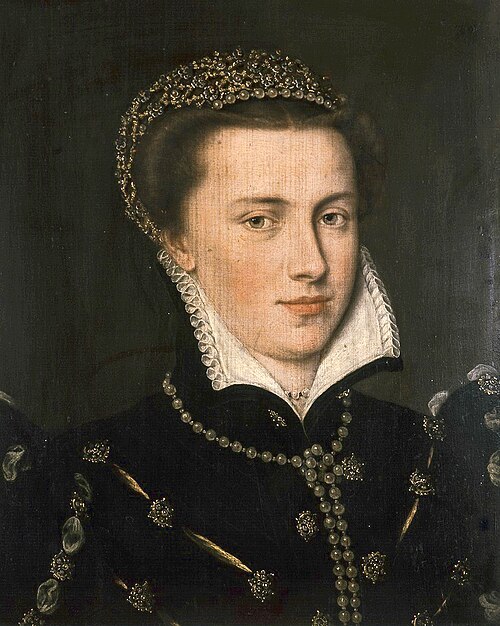
Image by Unknown master painter from northern Rhineland
Step 4️⃣ 👣: Alexander Farnese, Duke of Parma
"Alexander Farnese (Italian: Alessandro Farnese, Spanish: Alejandro Farnesio; 27 August 1545 – 3 December 1592) was an Italian noble and condottiero, and a general of the Spanish army, who was Duke of Parma, Piacenza and Castro from 1586 to 1592, as well as Governor of the Spanish Netherlands from..."
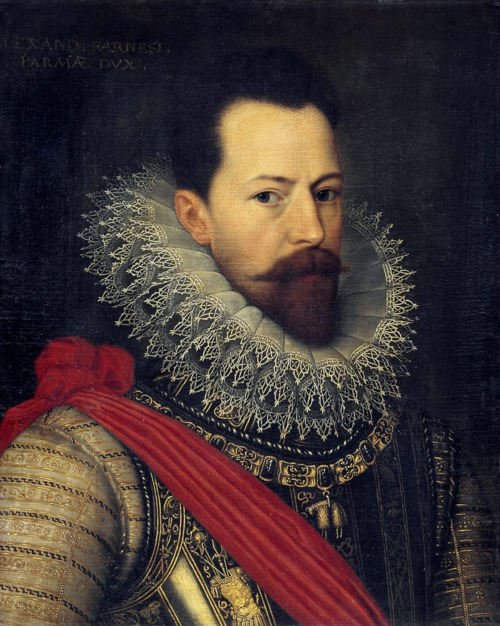
Image by Otto van Veen
Step 5️⃣ 👣: Antonio Farnese, Duke of Parma
"Antonio Farnese (29 November 1679 – 20 January 1731) was the eighth and final Farnese Duke of Parma and Piacenza. He married, in 1727, Enrichetta d'Este of Modena with the intention of begetting an heir. The marriage, however, was childless, leading to the succession of Charles of Spain, whose..."

Image by Unidentified painter
0 notes